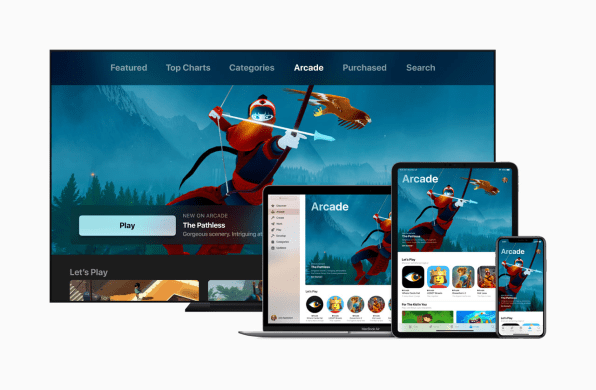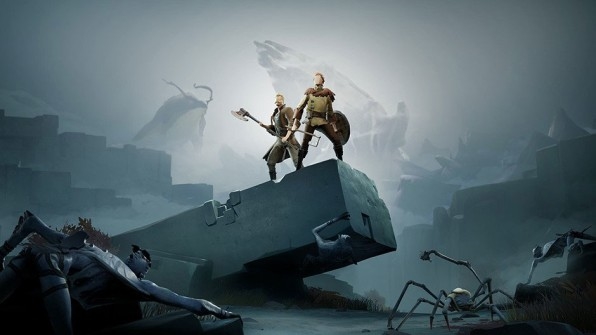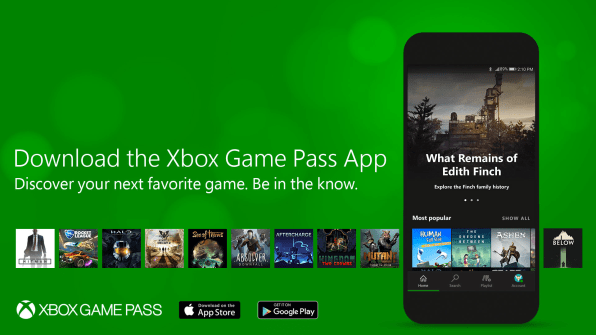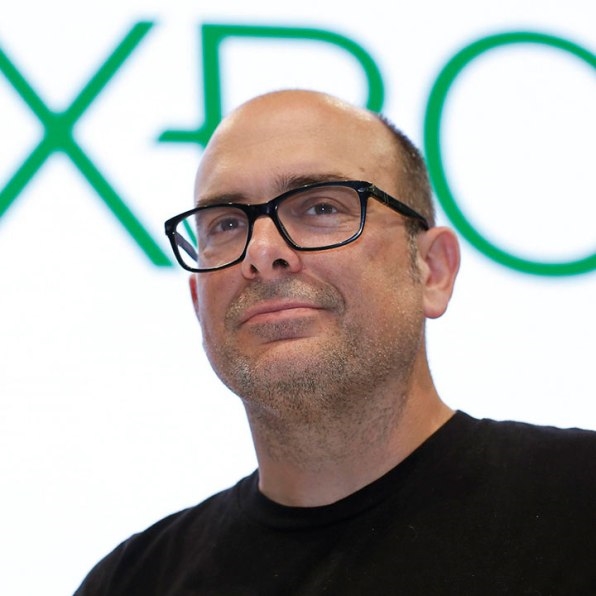How Apple Arcade and other subscriptions could save—or sink—indie games
Last week, Apple announced a new subscription gaming service called Apple Arcade, presenting it as an alternative to the freemium games that have overrun its iOS platform.
Coming this fall for an undisclosed price, Apple Arcade will provide more than 100 games on an all-you-can play basis without advertisements or in-app purchases. Renowned creators like Will Wright (The Sims) and Hironobu Sakaguchi (Final Fantasy) are on board, along with lots of up-and-coming independent creators. The idea is to let players experiment with new ideas and genres, while throwing a life preserver to developers who’ve rejected predatory free-to-play business models.
Apple isn’t alone in trying to build a subscription business around gaming. Microsoft, Sony, and Discord offer various game subscriptions for PCs and consoles already, while Google and Amazon are rumored to be developing subscription services around games that stream from the internet.

[Photo: courtesy of Apple]
But not everyone’s convinced that subscription services will be a boon for developers. If these services become the predominant way that people play games, some independent creators say the result will be a new race to the bottom, in which game makers compete for a shrinking pool of revenue.
“With a whole new model of selling video games like this, it comes with a whole bunch of potential ways that it can be bad for smaller developers and independent developers,” says Mike Rose, the founder of the independent game publisher No More Robots.
“A terrible model”
Rose, who first aired his subscription concerns a couple of months ago in a widely shared Twitter thread, says he’s been approached by several subscription platforms that want to pay for games based on the amount of time people spend playing them. That, he says in an interview, “is a terrible model for the vast majority of people who are making games.”
The fear is that the video game business will start to resemble something like Spotify, in which only the most popular artists see substantial royalties, and those payouts decline over time. Once these services are well established, Rose worries that subscription providers won’t need to pay as much to get new games onto their platforms.
“Say I’m one of the big names, and I’ve got a subscription platform … Three years go by, and I’ve been adding games bit by bit, and I now have this massive library of games that I’ve been giving people for free each month. I don’t need to be paying new developers massive amounts anymore,” Rose says. “Because now, they need to be on my platform more than I need them to come on my platform.”
Independent developers would be hit the hardest in that scenario, Rose argues, because they won’t have the bargaining power to get more favorable deals with subscription providers, or to even get on those services in the first place.
“Bigger developers are always going to have leverage, because they’ve got the big games, which the big platforms need,” Rose says. “For smaller developers, there’s no way a guy in his bedroom making a game is going to either have the skills to negotiate with a platform, or even know how to do it in the first place, or even know they need to do it.”
Paying developers based on play time, as Apple is rumored to be doing, could also discourage them from creating shorter experiences and could incentivize the same addictive mechanics found in free-to-play games. And unlike with streaming music, where a subscriber might listen to a song dozens of times and then go to that artist live in concert, game creators would have little opportunity to earn more revenue once someone’s played through their game.
“Just because one game is four times longer than the other doesn’t mean it’s worth more money,” Rose says. “So there are just a whole bunch of reasons why I’m worried about this movement.”
“The freedom of a subscription”
Of course, subscription purveyors aren’t so pessimistic. In fact, when I contacted Microsoft for this story, the company seemed eager to put a positive spin on game subscriptions, setting up three separate interviews with the head of Microsoft’s indie games program, an outside game developer, and the heads of Microsoft’s gaming services and Game Pass subscription program.
Throughout these conversations, a theme emerged: Subscriptions will actually be great for indies, because they allow players to take a chance on new ideas and allow small studios to build multiplayer games that require large audiences.

[Image: courtesy of Microsoft]
“Games are high-risk ventures,” says Derek Bradley, the founder and director of A44 Games. “In the really crowded market that it is now, do people even want to pay to find out if your game is good? Whereas on Game Pass, they can download it, check it out, see if they like it.”

[Photo: courtesy of A44]
A44’s first game is a sprawling action-adventure game called Ashen, and part of its allure is the ability to stumble across other players while exploring. By joining Microsoft’s $10 per month Game Pass service, A44 was able to secure a critical mass of Ashen players at launch, ensuring that the multiplayer component wasn’t a ghost town.
“We want people to play it together. We want them to get into co-op. We want that healthy, bigger player base,” Bradley says. “It has made a lot of sense for us, where you essentially get hundreds of thousands of people playing on day one in Game Pass. It’s just been huge for the sustainability of our studio and people knowing who we are.”
Subscriptions can also help players break out of the shooter and action-adventure genres that people tend to gravitate towards on consoles. Matt Percy, Microsoft’s head of planning and business development for Game Pass, points out that 40% of people who played the puzzle game Human Fall Flat on Game Pass had never tried a puzzle game on Xbox before.
“What we found with Game Pass is that with the freedom of a subscription, it allows you to take risks as a consumer,” Percy says. “It allows you to play things you might not have otherwise ever played, and then fall in love with a developer and a genre, and then go on to experience more of that.”
“People talk”
While those arguments alone don’t invalidate Rose’s concerns about shrinking payouts and fewer opportunities for indies, subscription purveyors insist that they’ll try to do right by developers.
Discord, for instance, has focused exclusively on independent creators for its Nitro service, which for $10 per month provides a curated selection of games. Eros Resmini, Discord’s chief marketing officer, says the company pays developers up front to license their games for a period of time.
“I’m not sure why a company would want to [pay based on play time],” Resmini says. “We deliberately did not do that because we thought it was unfair to indies.”

Microsoft won’t get into specifics about its business model for Game Pass but says it offers developers a guaranteed license fee to carry their games, and Percy argues that, ultimately, these services will live or die based on how they treat developers. Even Apple said during its Arcade announcement that it’s funding development for new games.
“This is a small industry, and people talk,” Percy says. “And to the extent that we’re being fair and treating people well, the service will flourish.”
To that end, Microsoft says that it’s not out to destroy other business models with Game Pass.
“From the beginning, we’ve been committed to the idea that Game Pass is additive, and that it was not displacing existing business models or existing ways of discovering content, that it was something new that enhanced those,” says Ben Decker, Microsoft’s head of gaming services. “That’s what we’ve found to date, and that’s what we’re committed to going forward.”
New anxieties
Having listened to all of these arguments, it seems to me the real issue is not subscriptions per se but the underlying uncertainty that they add to a business that’s already cutthroat for independent creators.
Last month, game designer Xalavier Nelson Jr. wrote an essay for Polygon about the anxieties of releasing an indie game in 2019. There are too many games to choose from and too many game sites and YouTubers clamoring for attention. There’s too much unpredictability in the recommendation algorithms on stores like Steam, and there are too many bad actors gaming those algorithms with low-quality content. (Incidentally, Nelson is the narrative designer and writer for Hypnospace Outlaw, which is published by Rose’s label, No More Robots.)
“The number of variables involved in releasing a new game has increased dramatically in the past few years,” Nelson wrote, “and following established best practices no longer guarantees success, or even recognition.”

[Photo: courtesy of Microsoft]
Within this environment, subscriptions represent yet another thing to worry about, another set of negotiations to undertake, and another gate to clear. While no one knows whether subscription services will become the predominant way people play games in the future, they’ll inevitably be something that indie developers will have to reckon with as they decide how to distribute their work.
Of course, there’s a positive way to spin that outcome as well.
“Game Pass being another tool in the quiver of independent developers, another place they can think about getting their game out there, it gives more options for developers,” says Chris Charla, the head of Microsoft’s publishing program for indie game makers. “And the more options we can give developers and just stand back, the better games we’re going to get as fans and players.”
Fast Company , Read Full Story
(30)



